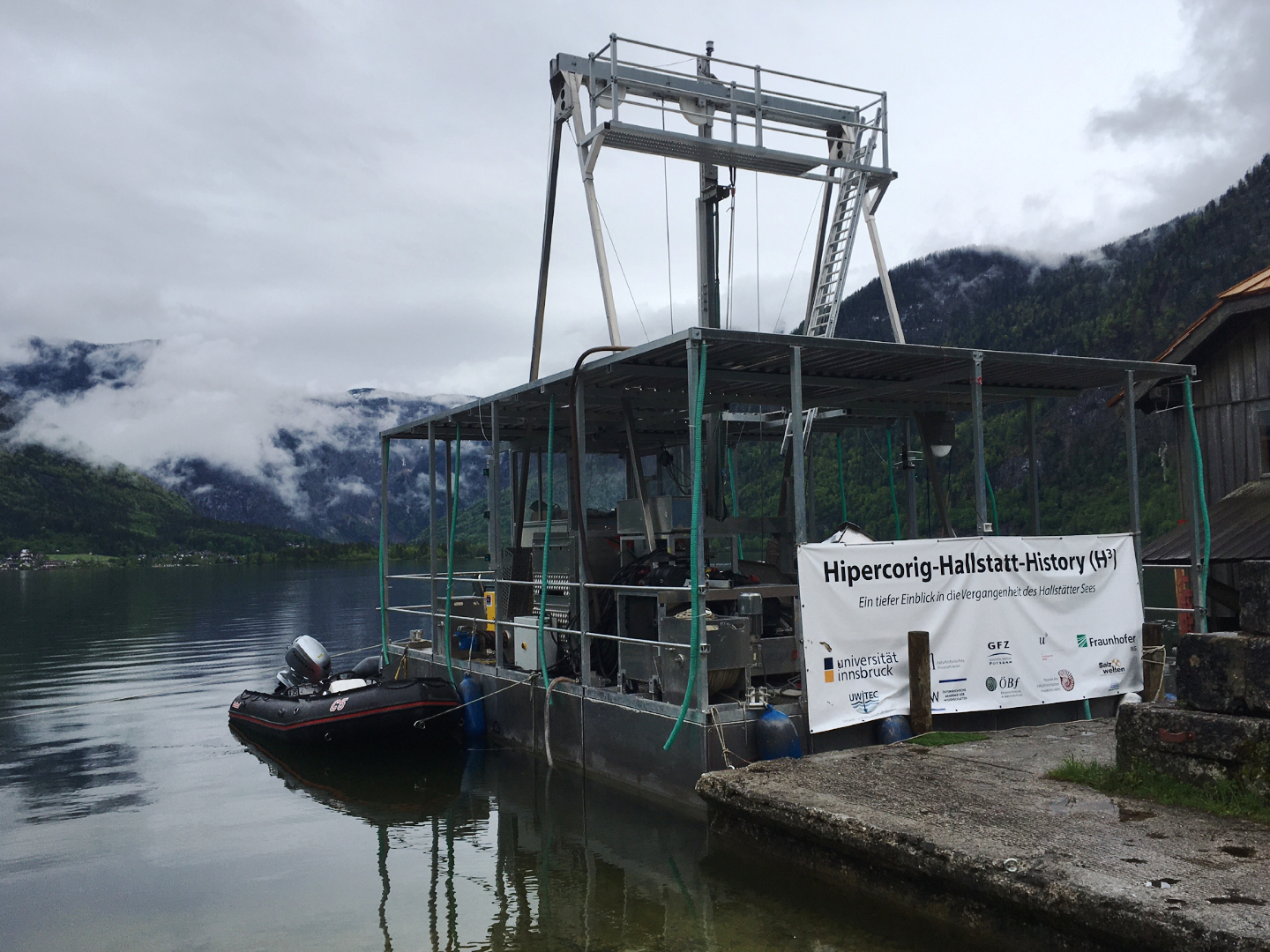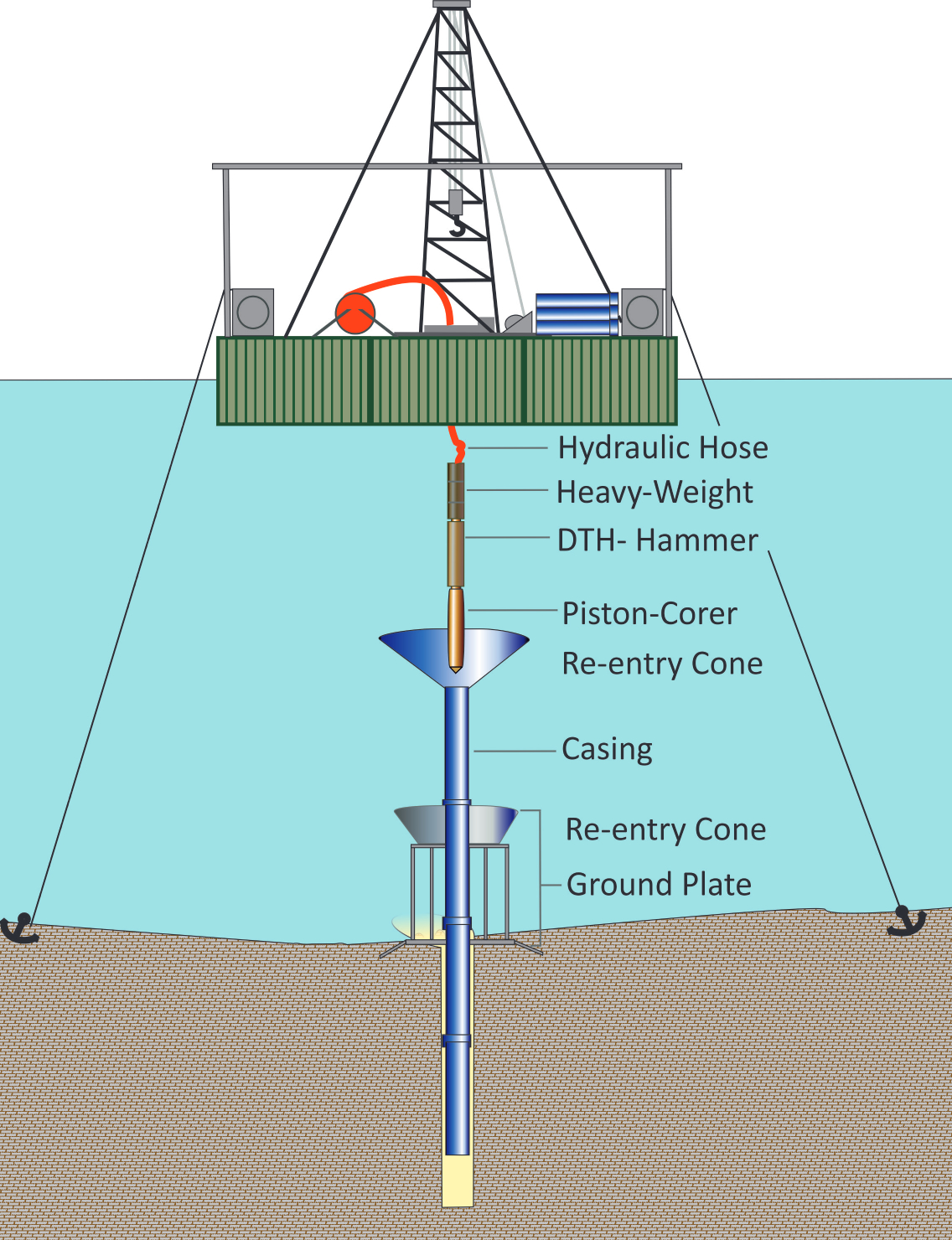HiPerCoRig
Mobile Multi-Component Drilling System with Down-The-Hole Hammer for the Extraction of High-Quality Sediment Cores on Land and in Lakes
Sediments provide important insights into the Earth's climate history. However, particularly interesting, deeper sediments in remote areas, such as lakes in mountainous regions, often remain unreachable for conventional drilling equipment. To extract long, continuous cores from deep sediments in these locations, the HiPerCoRig system was developed. The drilling system is modular, making it very easy to transport and set up—important criteria when exploring even the most remote regions worldwide. The core component is a hydraulic drill hammer, operated down-the-hole via a long pressure hose (flexible coiled tubing). About 70 hammer blows per second generate dynamic thrust power in the borehole, unlike the static methods typically used with manual weights or heavy drill rods. The only operating medium for the hammer drive, at a pressure of 200 bar, is the surrounding seawater, eliminating the need for additional logistics or processing and preventing environmental impacts in often sensitive ecosystems.
To infer climate conditions from earlier times, various micropaleontological, sedimentological, organic, inorganic, and geochemical analyses are employed. This method, known as multiproxy study, allows for understanding changes in environmental conditions in response to climatic influences. The demand for such multiproxy studies on high-quality long sediment archives necessitates more powerful core drilling systems that significantly expand previous technical capacities while allowing cost-effective sampling of unconsolidated sediments. To this end, Fraunhofer IEG initiated the development and construction of the HiPerCoRig system with its partners (see below) as part of the German research drilling consortium GESEP. A proven, predominantly manually operated sampler was coupled with a down-the-hole hammer (DTH) known from mining and deep drilling, enabling the impact forces to act dynamically and always directly above the core, thus penetrating even the hardest sediments or loose rocks and reaching greater depths. This underground tool is part of a multi-component system, based on a mobile and highly transportable aluminum platform with accessories, allowing continuous core extraction up to 100 meters deep on land and up to 300 meters in water. This device fills a significant gap in the available and economical technology for drilling and extracting cores from loose and harder sediments.
This methodological innovation enables new research qualities for drilling campaigns along ocean-continent measurement routes. It is especially cost-effective in hard-to-reach drilling locations and strengthens cooperation between marine and terrestrial research. The use of this device allows for drilling at significantly lower costs, as large commercial drilling systems can be omitted.
The development and construction of the HiPerCoRig drilling system were funded by the German Research Foundation (DFG) and German Scientific Earth Probing (GESEP). Partner institutions of the project include UWITEC GmbH, GFZ Potsdam, TU Braunschweig, University of Bern, University of Innsbruck, Fraunhofer IEG, GESEP, and LUBW.

